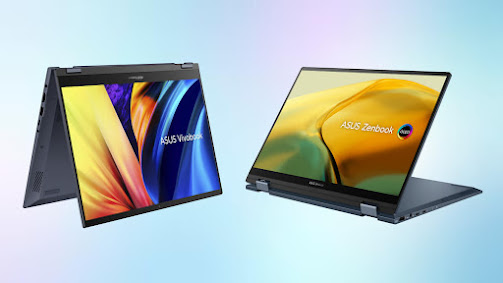In today's fast-paced digital world, technology continues to evolve, offering consumers more innovative and versatile options. One such innovation that has gained popularity in recent years is the 2-in-1 laptop. Combining the functionality of a traditional laptop with the flexibility of a tablet, these devices offer users the best of both worlds. In this article, we'll delve into what 2-in-1 laptops are, how they work, and which companies are leading the way in their development.
What are 2-in-1 Laptops?
2-in-1 laptops, also known as convertible or hybrid laptops, are devices that seamlessly transition between laptop and tablet modes. They typically feature a touchscreen display that can be rotated or detached from the keyboard, allowing users to use the device in various configurations. In laptop mode, they function like traditional laptops, with a keyboard and trackpad for input. In tablet mode, the keyboard is either folded behind the display or completely detached, allowing users to interact with the device using touch input.
How Do They Work?
The versatility of 2-in-1 laptops is made possible by their flexible design and hardware components. At the core of these devices is a powerful processor, similar to those found in traditional laptops, capable of handling a wide range of tasks. Additionally, they feature a touchscreen display with support for stylus input, providing users with a more intuitive and natural way to interact with their device.
One of the key design elements of 2-in-1 laptops is their hinge mechanism, which allows the display to be rotated or detached from the keyboard. This hinge is engineered to be sturdy and durable, ensuring that the device remains stable in both laptop and tablet modes. Some 2-in-1 laptops feature a 360-degree hinge, allowing the display to be flipped all the way around for use in tent or stand mode, ideal for presentations or media consumption.
Leading Companies in 2-in-1 Laptop Development
Several companies have been at the forefront of 2-in-1 laptop development, pushing the boundaries of design and innovation to create cutting-edge devices that meet the needs of modern users.
Microsoft: Microsoft's Surface lineup includes some of the most popular 2-in-1 laptops on the market, such as the Surface Pro and Surface Book. These devices feature premium build quality, high-resolution displays, and support for the Surface Pen stylus, making them ideal for productivity and creativity tasks.
Dell: Dell offers a wide range of 2-in-1 laptops under its Inspiron, XPS, and Latitude series. These devices are known for their sleek design, powerful performance, and innovative features such as Dell's Active Pen support and InfinityEdge displays.
Lenovo: Lenovo's Yoga series is synonymous with 2-in-1 laptops, featuring a unique watchband hinge design that allows for smooth transitions between laptop, tent, stand, and tablet modes. The Yoga lineup includes models for every budget and use case, from the consumer-focused Yoga C series to the enterprise-grade ThinkPad X1 Yoga.
HP: HP's Spectre and Pavilion x360 series are popular choices for users looking for affordable yet feature-rich 2-in-1 laptops. These devices offer a balance of performance, portability, and versatility, with convertible designs and optional stylus support.
Asus: Asus offers a diverse lineup of 2-in-1 laptops under its ZenBook and VivoBook Flip series. These devices are known for their innovative design, high-resolution displays, and competitive pricing, making them a popular choice for budget-conscious consumers.
Conclusion
2-in-1 laptops represent the evolution of traditional laptops, offering users the flexibility to switch between laptop and tablet modes to suit their needs. With their powerful performance, intuitive touch input, and versatile design, these devices are ideal for work, creativity, entertainment, and everything in between. As technology continues to advance, we can expect to see even more innovative features and designs from leading companies in the 2-in-1 laptop space, further enhancing the user experience and driving the adoption of these versatile devices.

Comments